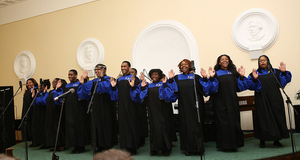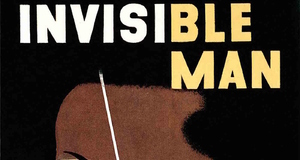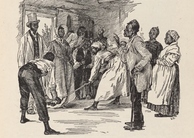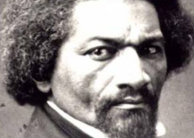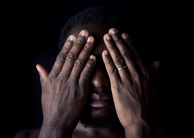In Search of Manhood: The Black Male's Struggle for Identity and Power
By
2009, Vol. 1 No. 11 | pg. 3/3 | « Introspection: Awareness, Challenges, and OpportunitiesThe journey to becoming an effective helper is rooted in the many encounters one has with various cultures different from their own. That culture may not always be evident by difference of race, but could also include difference of social economic status, gender, sexual orientation, language, disability, and ethnicity. It also entails being cognizant of one's own assumptions and biases about human behavior, being aware of society’s views and stereotypes about certain groups and/or races of people, and having a clear understanding of one's own world view and the world view of others (Corey & Corey, 2007). This same philosophy was applied as the author worked through this project. This is the most effort the learner has put into any Graduate and Undergraduate research paper, as the topic is one in which the learner has a deep connection to and interest in. The various readings, peer discussion, and this final paper, has allowed the author to become even more empathetic and understanding of the Black male experience. Being affected by the same system that creates disadvantages and subjectivity of Black males, the author always has to work through assumptions learned by the dominant culture regarding gender performance. Conducting extensive research, coupled with observation and lived experience has allow the learner to achieve a greater command of the psychology of Black males and the rationale behind behaviors sometimes deemed as dysfunctional. This discerning of such knowledge will increase the authors capacity in being an effective counselor and building positive relationships. The establishment an effective counselor-client relationship is built upon core conditions such as geniuneness, empathy, unconditional positive regard, and congruence to name a few. The ability of a counselor to show empathy and understanding towards clients of varying cultures and backgrounds is a major principle and competency of multiculturalism. The determination of a counselor\'s ability to be both ethical and effective is defined by their ability to provide service to clients without regard to race, social or economic status, sexual orientation, or any other distinguishable factors.The complex nature of the challenges confronted by Black males coupled with a host of developmental issues, conclude that a multitude of counseling techniques may be of value. Harris (1995) describes the necessity for the implementation of such techniques by stating, “both the extent and nature of problems specific to Black males suggest the need for creative counseling interventions and expanded roles of counselors. Although defining and targeting the most appropriate level of intervention can be difficult, the detrimental effects of these problems and the possible advantages of counseling favor intervention” (p. 244). Harris et al. further argues, “a broader spectrum of counseling goals is required than has traditionally been promoted by counselors. Psychological and educational counseling that employs diverse strategies and objectives in relation to the developmental and sociocultural needs of this population” (p. 244). One technique that the author believed could be employed is education. If a Black male client exhibits signs of self-hate or behavioral dysfunction resulting from oppression and/or has rejection of Black culture, the author as a counselor and previous African-American Studies Major, could address the stereotypes that the client has about others and then the stereotypes that exists about them. One this process has occurred, the author could follow up with accurate, culturally relevant and affirming information. The aim would be to not recreate trauma that is already experienced by the client, but at the same time helping them to see the pattern of behavior and aid them in them in feeling more empowered and capable of shaping their own identity and their own reality, versus having it shaped for them. The most important lesson that the author has taken away from this course and this assignment is rooted in the ability to be ethical. The failure of the counselor to provide quality service to client for any reasons regarding factors of multiculturalism infringes upon the basic human rights of the client to be treated without discrimination and infringes upon their cultural autonomy (Corey & Corey, 2007). Because this dynamic is already present within Black male life, the author must be cognizant as to not push personal world views, values, and beliefs upon the Black male due to lack of understanding, knowledge, and failure to deal with the authors own biases regarding definitions of Black male identity based upon patriarchy. This proves as a detriment to both the client and the counseling relationship as the author may not always know initially if the issues that the client has come to counseling for is some how intertwined with their functioning within society or interpersonal relationships due to factors of multiculturalism. ReferencesAnderson, E. (1999). Code of the Streets: Decency, Violence, and the Moral Life of the Inner City. New York: W.W. Norton & Company, Inc. Bergner, G. (1998). Myths of Masculinity: The Oedipus Complex and Douglas\'s 1845 Narrative. In C. Lane (Ed.),The Psychoanalysis of Race (pp. 241-260). New York: Columbia University Press. Boodie, J.L. (1997). Finding a Crystal Stair: Exploring the Turn-Around Phenomenon Experienced by African American Urban Male Adolescents in High School. Blackburn, VA: Virginia Polytechnic Institute. Booker, C.B. (2000). “I will wear no chain!” Connecticut: Praeger Publishers. Charles, K.K. & Guryan, J. (2009, April). Minding the Racial Wage Gap: The Role of Prejudice in Black Wages. Capital Selected Papers. Retrieved May 19, 2009, from http://www.chicagobooth.edu/capideas/apr09/2.aspx. Cawthorne, April. (2009, April 15). Weathering the Storm: Black Men in the Recession [Electronic Version]. Center for American Progress. Retrieved May 31, 2009, from Cokley, K. & Helm, K. (2007). The relationship between African American enculturation and racial identity. Journal of Multicultural Counseling and Development, 35, 142-153. Cokley, K. (1996). The psychological and socio-historical antecedents of violence: An africentric analysis [Electronic Version]. Journal of African American Studies, 2(1), 3-13. Corey, M. & Corey, G. (2007). Becoming a Helper (5th ed.). Belmont, CA: Thomson Brooks/Cole. Harris, S. (1995). Psychosocial development and Black male masculinity: Implications for counseling economically disadvantaged African American male adolescents. Journal of Counseling & Development, 73(3), 279-287. Retrieved May 19, 2009, from PsycINFO database. Holzer, H., Medford, E.G., & Williams, F.J. (2006). The Emancipation Proclamation: Three Views (Conflicting Worlds: New Dimensions of the American Civil War). Louisiana:Louisiana State University. Hooks, b. (2004). We real cool: Black men and masculinity. New York and London: Routledge. Hooks, b. (2004). The Will to Change: Men, Masculinity, and Love. New York: Simon & Schuster, Inc. Jones, J. H. (1993). Bad Blood: The Tuskegee Syphilis Experiment. New York: Free Press. Thomas-Lester, A. (2005, June 14). A Senate Apology for History of Lynching [Electronic Version]. The Washington Post, pp. A12. Pervin, L., Cervone, D., & Oliver, J. (2005). Personality Theory and Research(9th ed.). Hoboken, NJ: Wiley. Powell, J. (2008). The impact of societal systems on black male violence. Journal of Aggression, Maltreatment & Trauma, 16(3), 311-329. Retrieved May 22, 2009, doi:10.1080/10926770801925742. Reeves, J.L. & Campbell, R. (1994). Coloring the Crack Crisis. In E. E. Davis & E.C. Pease (Eds.). The Media in Black and White. New Brunswick: Transaction Publishers. Sabol, W.J. & Coutrue, H. (2007). Bureau of Justice Statistics. Prison Inmates at Midyear 2007. Retrieved May 13, 2009, from http://www.ojp.usdoj.gov/bjs/pub/pdf/pim07.pdf. U.S. Department of Justice office of Justice Programs Bureau of Justice Statistics. (2000). Intimate partner violence. Washington, DC: Author. Williams, O. (1998). Healing and confronting the African American male who batters. In R. Carrillo & J. Tello (Eds.). Family violence and men of color: Healing the wounded male spirit (pp. 74-94). New York: Springer. Suggested Reading from Inquiries Journal
Inquiries Journal provides undergraduate and graduate students around the world a platform for the wide dissemination of academic work over a range of core disciplines. Representing the work of students from hundreds of institutions around the globe, Inquiries Journal's large database of academic articles is completely free. Learn more | Blog | Submit Latest in African-American Studies |









